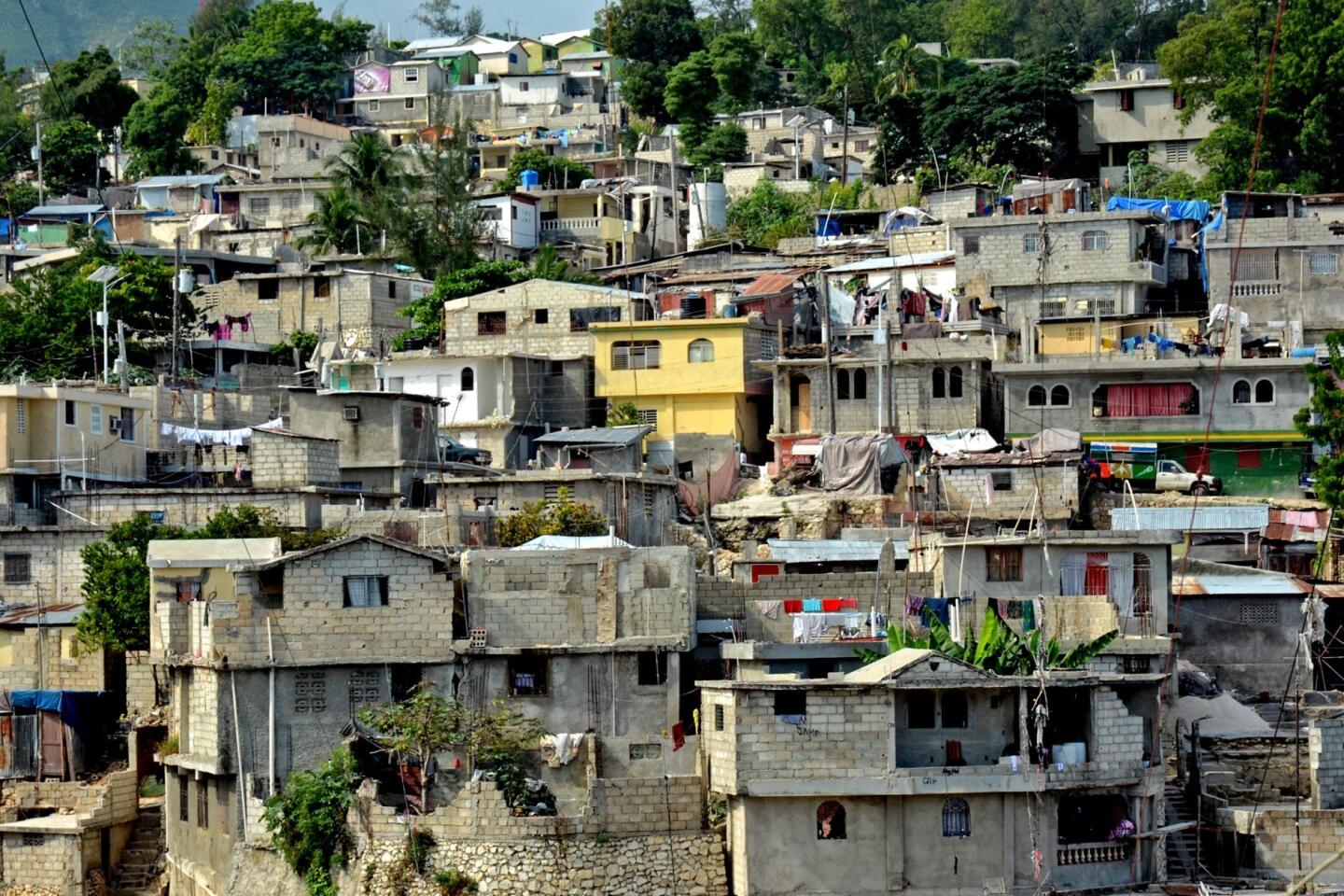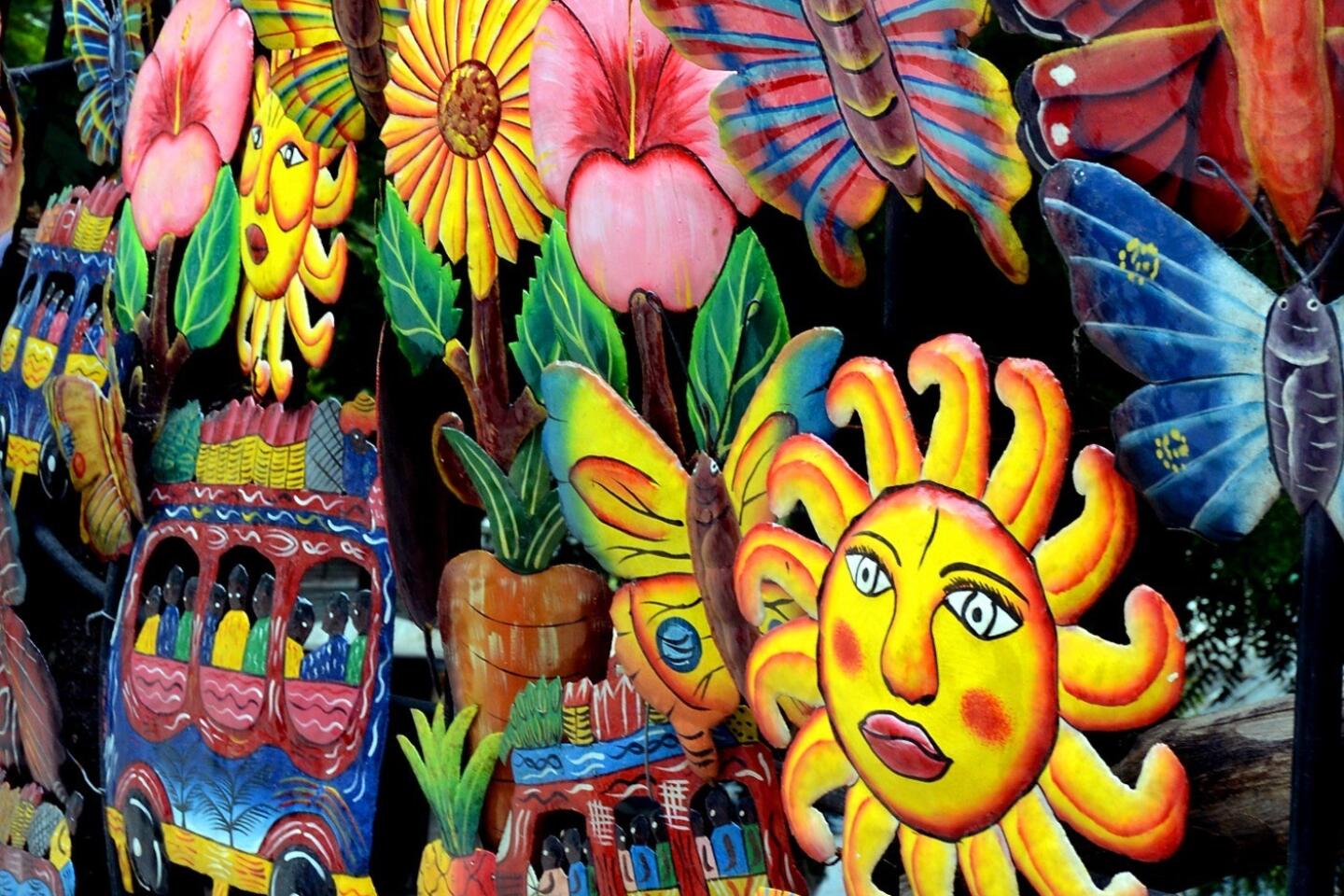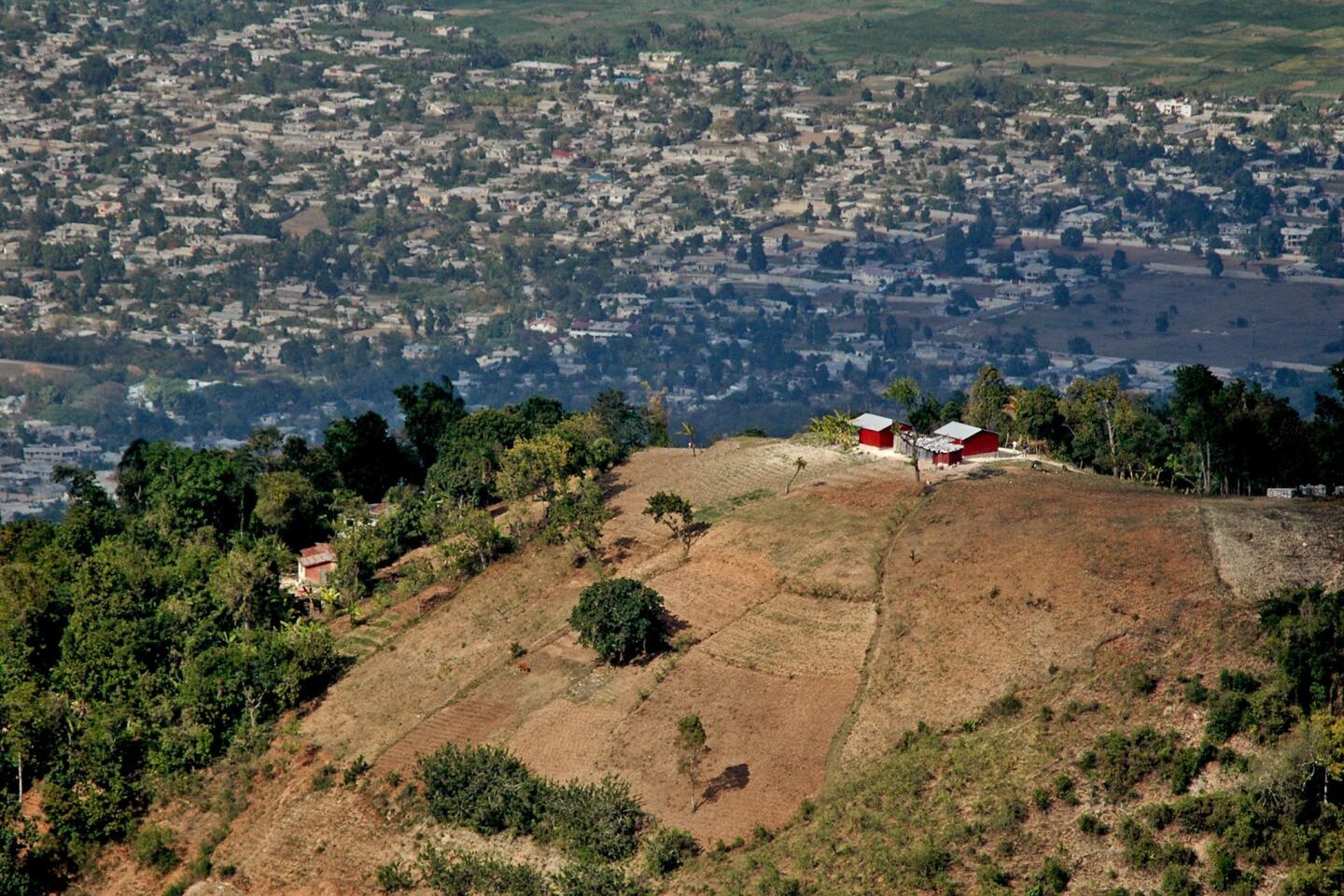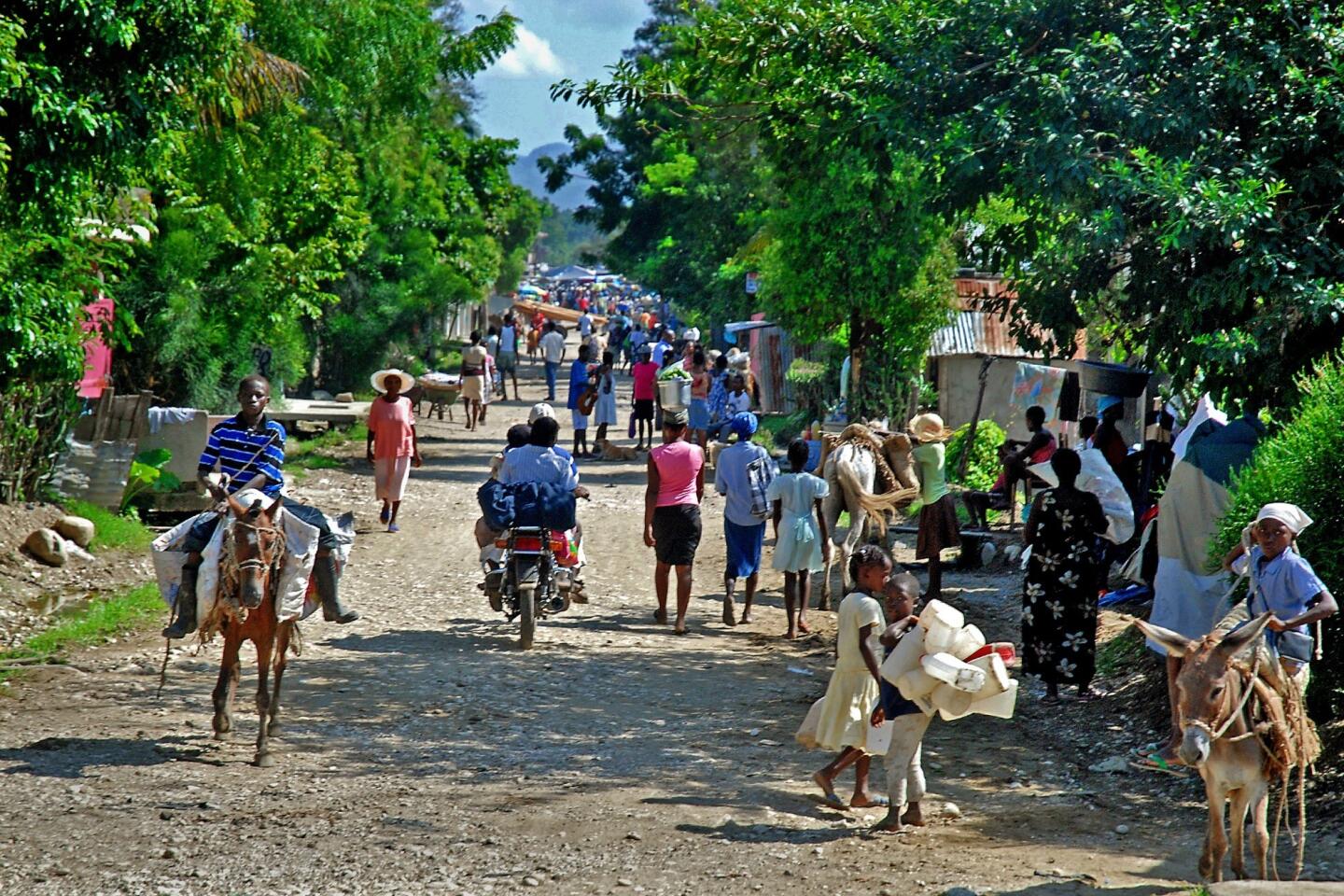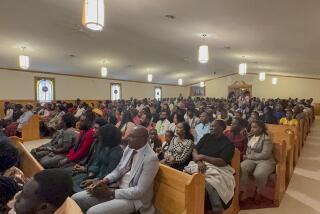In Haiti, at every turn, a new surprise
PORT-AU-PRINCE, Haiti — Two turns off the alley and I was hopelessly lost.
In less than five minutes, I couldn’t see the guest house where I had been staying for a week, even though it was one of the taller buildings in Haiti. With a few quick turns, my guide led me and a friend into a world we couldn’t possibly imagine, much less navigate.
For four hours, we traversed Petionville, one of the towns that makes up the sprawling metropolis of Port-au-Prince. It was all narrow passages and stairs between concrete buildings that cascade off one another, spilling down the ubiquitous hills of Haiti before hitting bottom and starting the climb back up.
We would be so deep in the maze we could barely see sunlight, then we would duck through a passage and find ourselves on a spit of openness with 6-foot cornstalks sprouting through the garbage-strewn ground.
When we ran out of sidewalk, we hopped in a tap-tap, the colorful, crowded taxis that are the backbone of the country’s public transportation system, and we headed deeper into the city. Then the route ended and we were dropped at the edge of a blocks-long open-air market, where vendors were selling wares as diverse as eggplants, brooms and individual doses of medicine of uncertain type and vintage.
We made it back to the guest house on foot, passing a vigorously physical soccer match played on a concrete pad, street-side mattress dealers, hawkers with their wheelbarrows full of raw, red sugar cane and a beautiful image of the Virgin Mary painted on the wall outside an auto parts shop.
The trip had been punctuated by dust, smog and smoldering something — always, in Haiti, something is smoldering — and a soundtrack of endless horns, voices and hip-hop.
For $25 and half a day, I had seen a Haiti most people miss.
Indeed, many people miss Haiti altogether — on purpose. It isn’t a great tourist draw. But it has unbelievable beauty and a deep, rich culture worth the effort it takes to find it.
The world that turned other Caribbean islands into all-inclusive themed resorts never took hold in Haiti. If you like your traveling planned and predictable, your food familiar and your sheets changed every day, Haiti is not your place. The locals live on “Haitian time,” a concept in patience foreign to most of us.
Some visitors just show up and wing it, but they’re rare. I met two backpackers on my trip in November, but they were the first I had seen in four visits.
Many people show up with mission groups or nonprofit organizations and head from the airport to wherever they’re going with barely a stop in between.
The tourist infrastructure shows that indifference to life off the planned path. Accommodations are substandard. Hot water is a luxury in most places, transportation is a nightmare and eating can be an adventure. Outside Port-au-Prince, finding a room is a challenge.
But if you do a little homework, check your expectations at the immigration counter and hire some help, you can find an amazing country.
“Haiti has so much to offer the visitor,” said Jacqui Lebrom, a British expat who has run a tourism business in Port-au-Prince since the 1990s. “Yes, we have wonderful beaches, but we also have beautiful mountains for hiking, sea activities such as diving and interesting cities.”
The big draw is Port-au-Prince because it’s home to a quarter of the country’s population and many of its most notable sites. The Presidential Palace, the Catholic and Episcopal cathedrals, and a small but important collection of colonial-era gingerbread houses are in varying stages of disrepair since the January 2010 earthquake, but other nearby attractions are going strong.
The village of Croix-des-Bouquets, where much of the country’s decorative metalwork is made, draws a steady crowd and offers an unexpected sight: a lone rail from a long-abandoned railway that once connected the village to ports.
In the hills above the city, Ft. Jacques offers a stunning, if surprisingly distant, view of the harbor it was built to protect. And the famed Baptist Haiti Mission spreads across a hillside, its doors — and kitchen —open to all who come through.
Outside Port-au-Prince, the big draws include Jacmel, on the southern coast, and Cap-Haïtien, on the north. The former features stunning beaches and scenery that remind you that you’re in the Caribbean. The latter is home to the Citadel, a 200-year-old fortress built by former slaves to help them fend off their French masters.
In November, construction was well under way on a couple of new luxury hotels in Port-au-Prince, but don’t count on much comfort if you’re heading there soon. Haiti’s not a place to relax; there’s too much to see to really clear your mind for long. But you’ll come home with memories of a place you might not have expected.
More to Read
Sign up for The Wild
We’ll help you find the best places to hike, bike and run, as well as the perfect silent spots for meditation and yoga.
You may occasionally receive promotional content from the Los Angeles Times.
